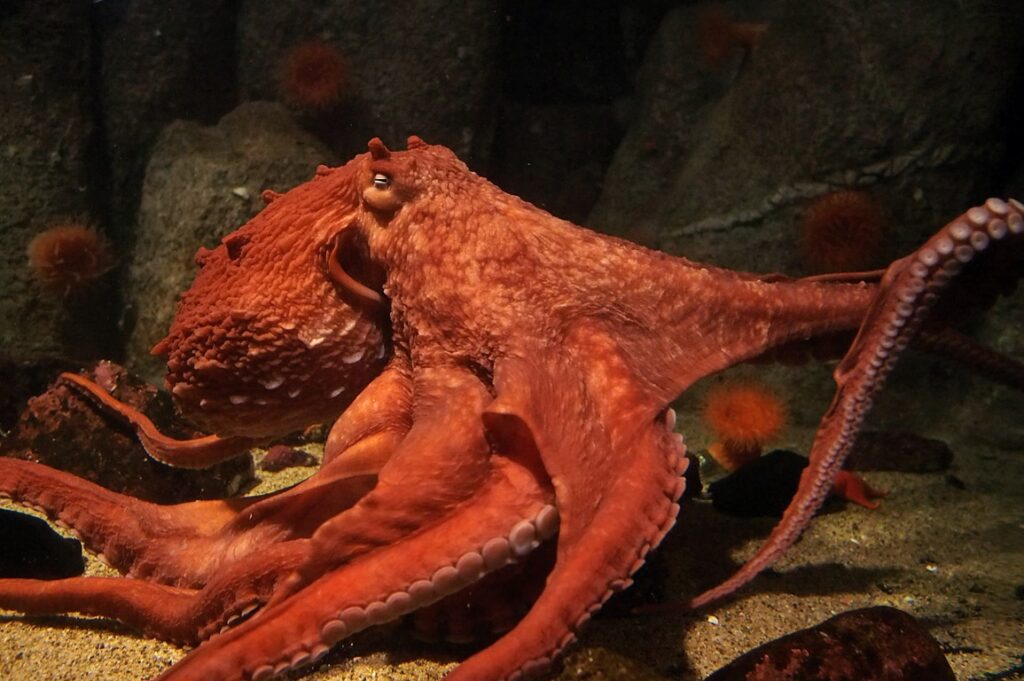
Introduction to the Giant Pacific Octopus
The Giant Pacific Octopus (Enteroctopus dofleini) is a remarkable marine creature known for its intelligence and adaptability. As one of the largest octopus species, it plays a significant role in marine ecosystems throughout the North Pacific Ocean, particularly along the coasts of Canada and the United States. With their unique characteristics and behaviors, these animals have become a topic of interest among marine biologists and ocean enthusiasts alike.
Physical Characteristics
The Giant Pacific Octopus can weigh up to 50 kilograms (110 pounds) and can have an arm span of up to 4.3 meters (14 feet), making it the heaviest octopus species. They possess a bulbous body and eight flexible arms, each lined with approximately 240 suction cups, allowing them to grasp and manipulate objects with dexterity. Their color-changing ability is not only a defense mechanism but also a means of communication, enabling them to blend seamlessly into their environment.
Habitat and Distribution
This octopus species primarily inhabits the cold waters of the North Pacific, including regions such as the coastal waters of British Columbia, Alaska, and California. They can be found in various habitats, from rocky shorelines to coral reefs and deep ocean floors, often taking refuge in dens made from rocks and shells. Their adaptability to different environments is crucial for their survival, particularly in the face of climate change and human activity.
Behavior and Intelligence
The Giant Pacific Octopus is renowned for its problem-solving skills and complex behavior. Research indicates these octopuses can navigate mazes, open jars to access food, and use tools, showcasing their high level of intelligence. They are primarily solitary creatures, often opting to hunt and live alone. Their diet consists of crabs, fish, and other marine invertebrates, which they hunt with precision using their impressive camouflage and rapid movement.
Conservation Status
Despite their impressive adaptability, Giant Pacific Octopuses face threats due to overfishing, habitat destruction, and climate change. While currently listed as a species of Least Concern by the International Union for Conservation of Nature (IUCN), continued monitoring and conservation efforts are necessary to ensure their populations remain stable. Marine protected areas and sustainable fishing practices play crucial roles in safeguarding their habitats.
Conclusion
The Giant Pacific Octopus is a fascinating example of marine life, illustrating the complexity and diversity of ocean ecosystems. Their intelligence, adaptability, and unique behaviors make them a subject of intrigue and admiration. As we continue to explore and learn about these incredible creatures, it is vital to advocate for their conservation and protection to ensure that future generations can appreciate the marvels of our oceans.



